Monte Kiffin was hired by the Cowboys to be their Defensive Coordinator despite some red flags: He was 73 years old, and he’d been unimpressive at his last two stops at the University of Tennessee and University of Southern California. (To be fair, head coach Lane Kiffin was probably a much bigger cause of those teams’ struggles.) The Cowboys had been one of the most recognizable 3-4 teams in the league, with their man-to-man cornerbacks and a Hall of Fame player in DeMarcus Ware at Outside Linebacker. So, understandably, the move to Kiffin’s 4-3 Tampa-2 style of defense was criticized in the offseason as being a waste of personnel talent. Maybe, though, the man who invented the Tampa-2 defense and won a Super Bowl behind it still has some tricks up his sleeve.
I’ll get into Ware in a moment, but I want to talk about Monte Kiffin’s work with this defense first. Even though he is best known for the Tampa-2 defense, with cornerbacks jamming and playing short zones, while linebackers drop to medium zones and safeties cover deep, he is not inflexible and he can adapt his defenses to the strengths of his personnel. He used Warren Sapp as a pure pass rusher, when a lot of 4-3 teams rely on that interior DT to take on blockers and help the LBs in the run game. Nobody played the short-zone Tampa-2 cover corner better than Ronde Barber, but Kiffin doesn’t have Barber. He has Brandon Carr and Morris Claiborne. So, he’s allowing his pair of standout man-to-man corners, Brandon Carr and Morris Claiborne, to do what they do best: play man-to-man with just safety help over the top.
If Kiffin can adapt his use of cornerbacks to his players’ talents, even though the squat cornerback was a signature of his famous Tampa-2 defense, then perhaps he is also up to the task of taking a future Hall of Fame player and converting him from a stand-up OLB to a hand-down DE while maintaining his productivity.
The above screen-captures are from 2012. We can easily see Ware’s stand and where he is positioned. In the top image, we see him playing head up on the OT with a player to his outside, and in the bottom one we see him in a standing stance, in his usual wide-5 position.
Now, here is Ware in his 4-3 DE spot. His leverage and position stay about the same, but now we simply see him in a down stance. I know, nothing revolutionary and nothing I wouldn’t expect you to know already. Let’s get into breaking him down from his DE position.
Above, we are looking at DeMarcus Ware vs Jake Long. I have a tremendous amount of respect for Long. His injuries are slowing him down, but the man still ought to be recognized as one of the better left tackles in football. Ware has a plethora of moves, as he has his entire career. In the above image, I have illustrated two paths Ware could take to the QB.
Throughout the game, Ware has attacked Long through the yellow arrow path, using a speed rush/outside no-contact rush. Ware is relying purely on his speed to get around Long and hoping Bradford drops back too far so he can get an easy sack. Ware has also attacked Long’s outside shoulder with some rip and swim moves as well, a more physical method of rushing the outside. The other path Ware could take is the orange arrow: the bull rush.
Well, as we see, Ware went with option 2. Why? Well, Ware’s constant attacking of Jake Long’s outside leg this game has led Long to adjust his drop to compensate. Ware, one of the smartest defensive players in the game, had been deliberately setting him up with the outside rush so he could catch him with a bull-rush here. Look at how off-balance Long is in his reaction. This is a good LT, and DeMarcus Ware is simply running over him.
It’s not totally clear in the above image, but at this point, Long is on the ground and Ware has come up with a big sack on Bradford. Now, is this something he could not have done out of the 3-4? In theory, he certainly could have, but in Rob Ryan’s defense, Ware moved around a lot: from one end to another, to inside player, to outside player, to occasionally dropping into coverage, to playing less aggressively upfield in case of a potential run. Ware did not get the kind of consistent work against one player needed to set up a chess move like this. Ware will move around some in the 4-3 (we will get to that in a moment), but he has spent the large majority of his snaps playing RDE, whereas in Ryan’s defense he was playing closer to 55-60% of his snaps at the ROLB spot. The increased action in the same position has given Ware the opportunity to set up moves like this one and to learn his opponent’s weaknesses over the course of the game. This wasn’t as possible in the last couple of seasons. I know, I know: he had 31 sacks under Rob Ryan, so it sounds crazy to say Ware’s production could be boosted even further.
Here is Ware on the other side of the line. I just wanted to show something simple that I think Ware does extremely well: His path to the quarterback and how committed he is to staying on that path. Cutting off potential cutback lanes or scrambling lanes is an important role of a defensive end being asked to play contain.
It may seem like a simple thing, but Ware stuck to his C-gap responsibility, while the blitzing player stayed in at the B gap spot. Ware didn’t push his path wide, or try to take a more direct cut inside. Now look at where Bradford can go: His movement lanes are limited due to Ware’s discipline in staying in his pass rushing lane. Rather than playing wild and out of control, he trusts #42 to fill the inside gap while also making sure not to go too far outside.
Onto our last play with Ware:
Ware is playing that wide-5 technique again. His hand is firmly in the ground, and he has a great chance against the right tackle, whom we can safely assume is an inferior pass blocker Jake Long. (In this case, it appears to be #72, third-year player Joe Barksdale, filling in for an injured Rodger Saffold.) The offense, for our purposes is in a shotgun, one-back, wing set. The RB lining up to Ware’s side could be there to set up a chip block to help Barksdale.
And that is exactly what we get. The running back chips Ware; the hope is that this gives Barksdale time to set in his stance and make the block. (On another note, we see the interior rusher to Ware’s side playing his position a bit wrong, attacking far outside of where he should be, leaving a large throwing lane for Bradford.)
I also want to note Ware’s great technique, as demonstrated by his ability to engage. He isn’t allowing the RB into his body at all; rather, he shoots his hands out and uses them to keep separation between himself and the running back, which in turn allows him to keep his feet and his momentum going forward.
At this point, Ware has successfully defeated the RB and is past him, He is a touch off balance from this chip attempt, but his technique and leverage have kept his momentum going forward, rather than letting the block take him backward. While Ware never really had problems with physical play, having his hand down did still bring concerns that he would have to engage blockers more directly rather than simply relying on his moves or speed, but so far this has not been a problem for Ware, certainly not in this game.
Ware’s ability to shed the RBs block as well as he did while staying strong has also allowed him to maintain his path to the QB: perfectly flat, he never goes to a depth deeper than that of the QB, which would allow the QB a lane to step up into and past the rush. It is a tremendous play by the most elite of pass rushers. Ware recognizes what was happening with the RB chip, uses some flawless footwork to beat it and keep his momentum, and sets himself up for his second sack of the game. Ware’s technique is perfect, and combined with his athleticism, it makes him always a threat to be the league’s premier pass rusher.
So what’s my final conclusion in all this? Any worry about Ware putting his hand on the ground and possibly struggling in a 4-3 system seems unfounded at this point. Ware’s size was never a concern: he’s 6’4″ and 250 pounds. He may be a touch light in the ass for someone of his frame– for example, Jason Pierre-Paul and Justin Tuck are of similar height, and each has about 20-25 pounds on Ware– but that lack of weight rarely, if ever, hampers his ability to play the run or attack a blocker with strength.
Ware is primed for a large season after this first three games. Ware very well could be set up to have one of the best seasons of his career, if he is not asked to “waste” snaps dropping into pass coverage, or playing more cautiously to protect against the run. (They aren’t truly wastes, but they cost him a snap of pass rushing, and Ware is an elite pass rusher above all else.) As far as whether he does reach that level of productivity this season, one thing you might want to watch is where the Cowboys line him up and how consistently they do so at one spot. I expect Ware to see about 900 snaps this season, and I predict, from what I’ve seen, that 600 or so, if not more, will be at the right defensive end position. Ware’s intelligence in setting up blockers will be an even greater asset if he is consistently facing the same pass protector, as we mentioned with the Jake Long play.
Hope you enjoyed it. That makes back to back posts from me about NFC East teams, so next time we’ll broaden out beyond that division– but I promise, we won’t cover Jacksonville (though, honestly, I would probably benefit from ranting about the Jaguars).
In the meantime, if you want to see additional content, please follow me on YouTube, Twitter and Twitch.tv. I’ll be letting people know via Twitter when I’ve posted a new YouTube video (I recently added a look at rookie Minnesota CB Xavier Rhodes) or when I’ll be live-streaming commentary about NFL players on Twitch (my past two broadcasts have included looks at players such as AJ Green, Justin Houston, Cam Jordan, Trent Richardson and Bruce Irvin). There’s no set schedule for the bonus material– it all depends on when I can fit it in and what either I or the viewers want to see broken down– so following me on Twitter is the best way to keep up.
Also make sure to follow us @ZoneReads for notifications when the blog is updated.
Twitter: @NeedleKU
Live Video and Streaming: http://www.twitch.tv/needle77
YouTube: http://www.youtube.com/user/MpernKu

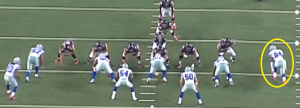


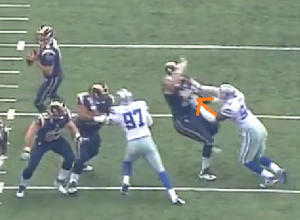

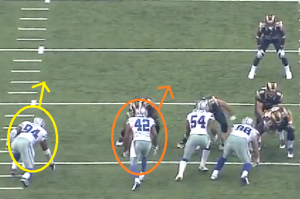
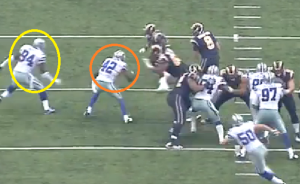

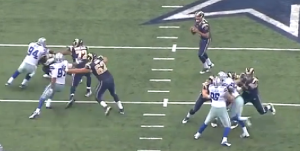
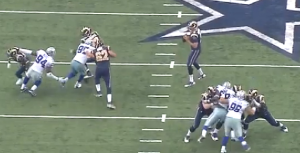

Recent Comments